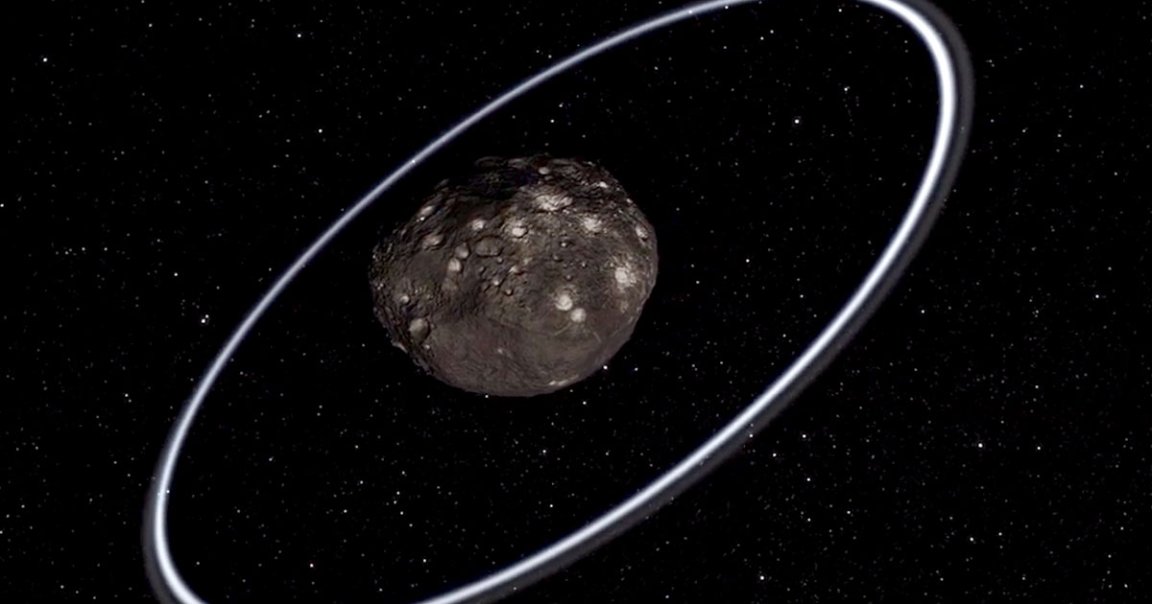
Iced Out
In 2013, astronomers made a first-of-its-kind discovery: Chariklo, a distinct type of object known as a Centaur that’s somewhere between an asteroid and a comet, had its own Saturn-like rings — two of them, in fact. And now, over ten years later, some of those same astronomers have endeavored for a second look using the mighty James Webb Space Telescope, and found unmistakable signs of water ice.
“Spectra from ground-based telescopes had hinted at this ice, but the exquisite quality of the Webb spectrum revealed the clear signature of crystalline ice for the first time,” said Noemí Pinilla-Alonso, a planetary scientist who led the observations, in a NASA statement.
Lucky Star
Chariklo remains the smallest object known to have its own rings, and the only one that isn’t a full-blown planet. It’s not tiny though, only 51 times smaller than Earth according to NASA, and the largest Centaur on record. But like other Centaurs, it’s betwixt the orbits of Saturn and Neptune — in other words, it’s really far from the Sun, and shrouded in darkness.
Getting a good look — even with the keen-eyed Webb — is exceptionally difficult, and requires a literal lucky star.
Because it’s so dark in those reaches of the solar system, starlight is needed to illuminate the Centaur. However, that requires Chariklo to fall across the path of a star that also happens to be in view of the Webb at the same time. The chance crossing of paths — and the technique of using it for observation — is called an occultation.
According to NASA, it’s the “first stellar occultation attempted” with the Webb, and by using its near-infrared camera (NIRCam), the astronomers spotted dips in the curve of the object’s brightness that corresponded with Chariklo’s two rings, “demonstrating a new way of using Webb to explore solar system objects,” the team wrote.
Ringworld
The astronomers soon came back for a second look using sunlight reflected in the rings, this time without the help of an occultation. Their analysis of the light spectrum showed absorption bands of water, and they believe the data collected will soon reveal even more details on the elusive Centaur, such as whether the water was present in the rings or the main body — and why it has rings in the first place.
“As we delve deeper into the data, we will explore whether we cleanly resolve the two rings,” said Pablo Santos-Sanz, an astronomer from the Institute of Astrophysics of Andalusia.
“From the shapes of rings’ occultation light curves, we also will explore the rings’ thickness, the sizes and colors of the ring particles, and more,” he added. “We hope [to] gain insight into why this small body even has rings at all, and perhaps detect new fainter rings.”
More on asteroids: Scientists Warn Giant Asteroid Is Actually Swarm, Nearly Impossible to Destroy